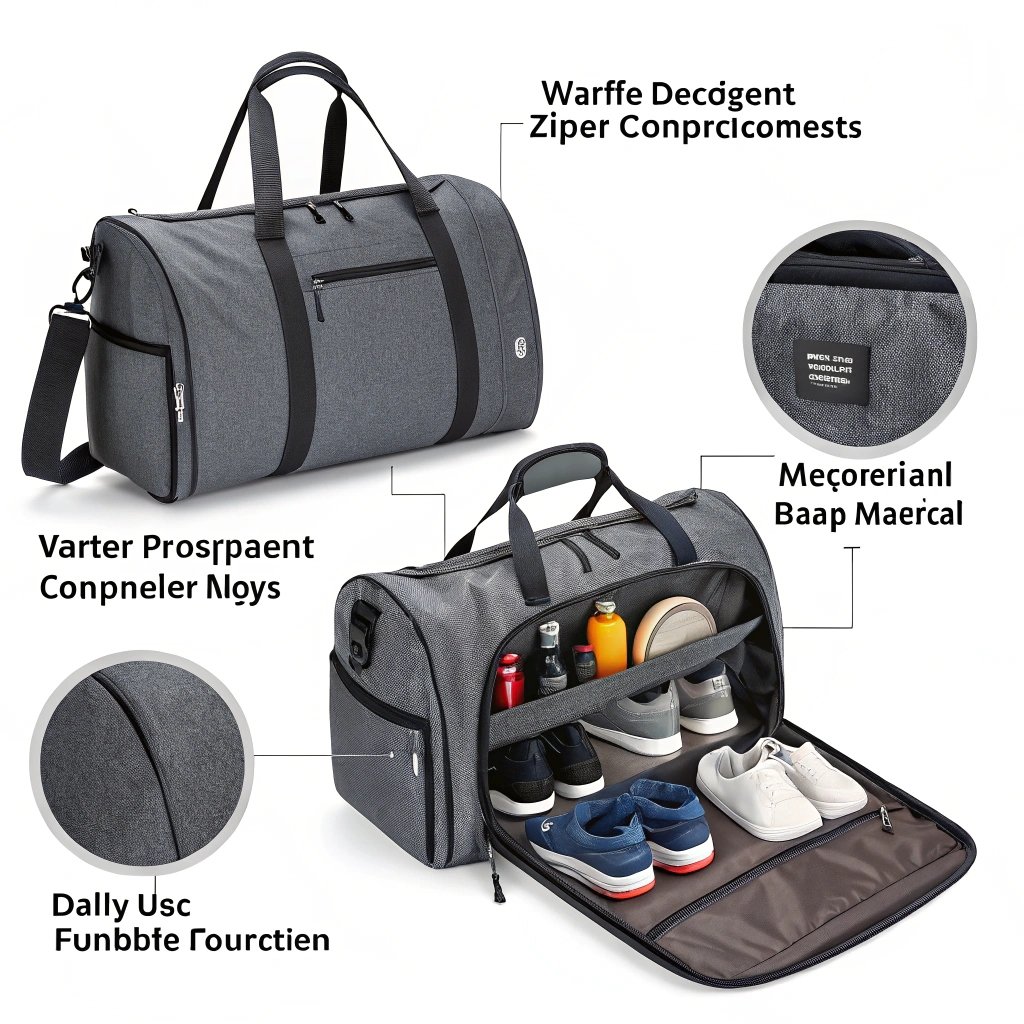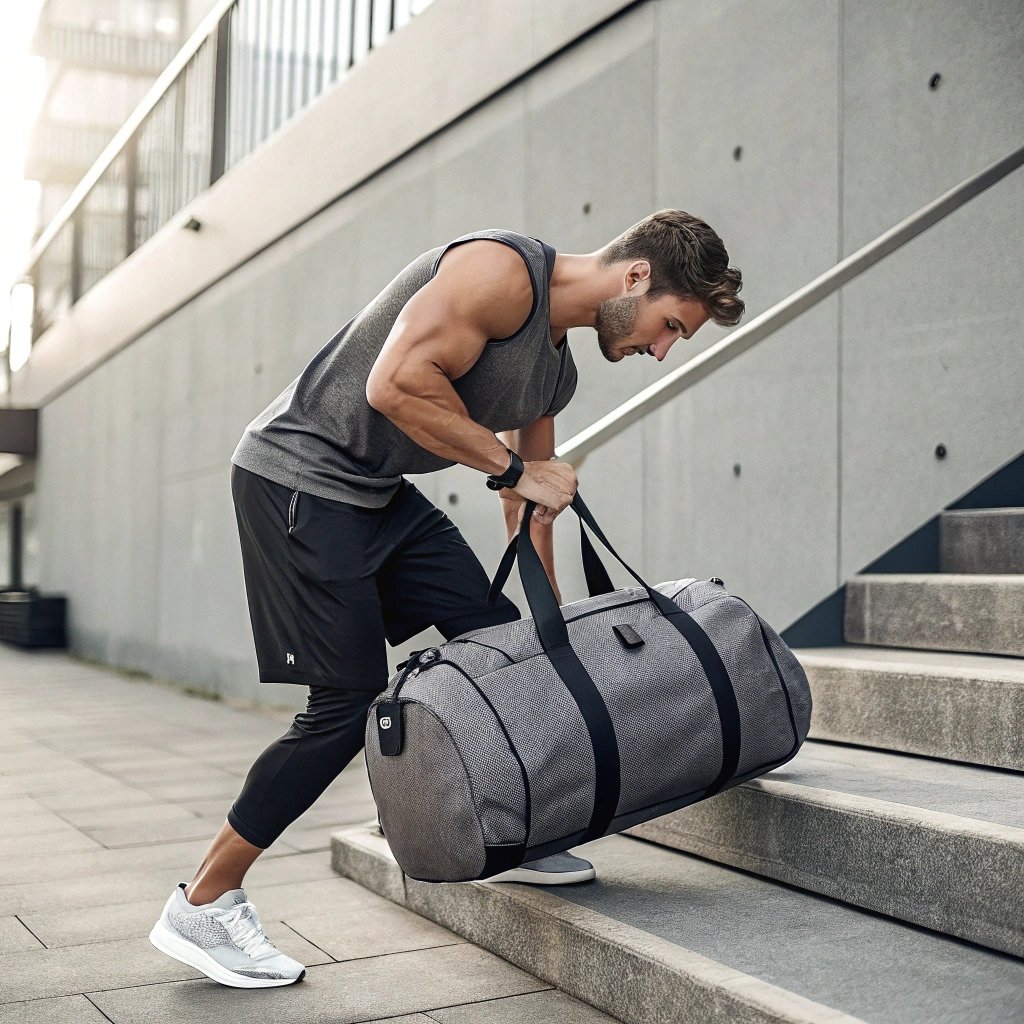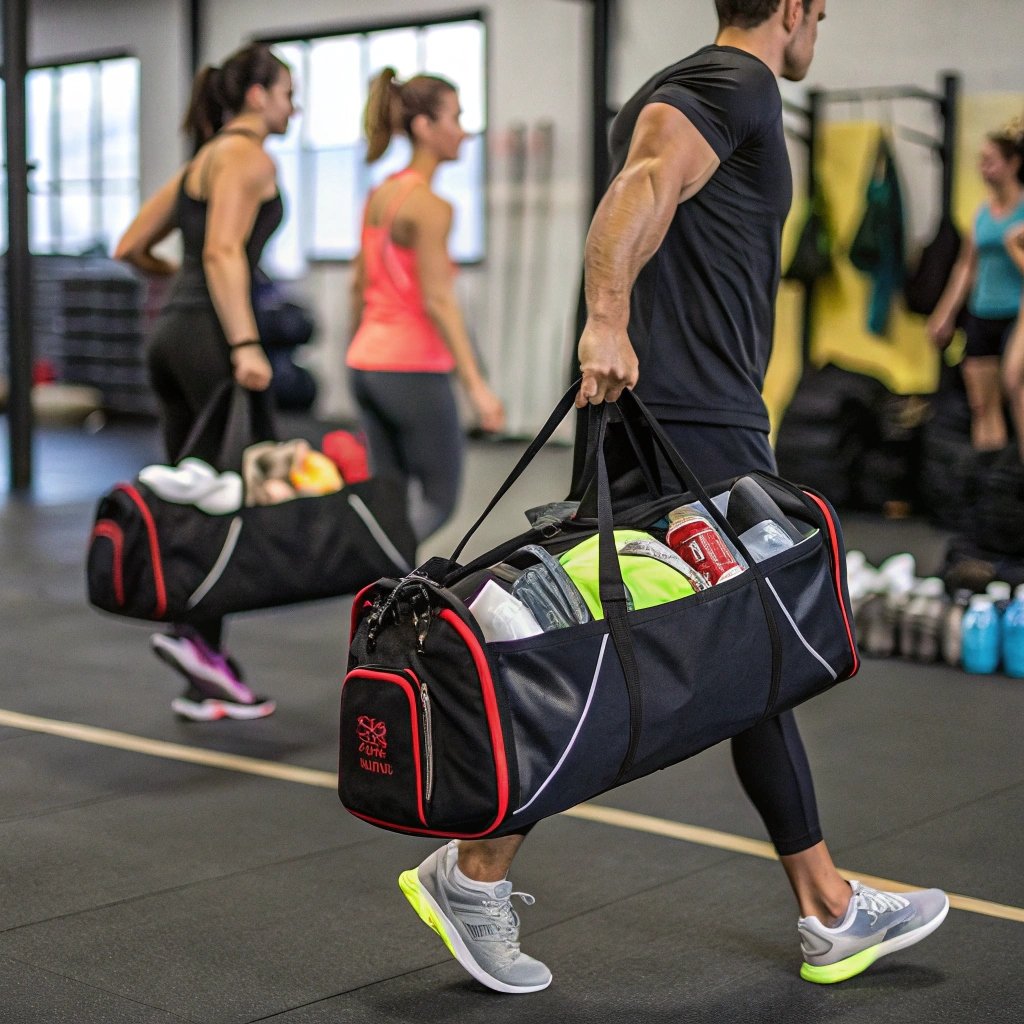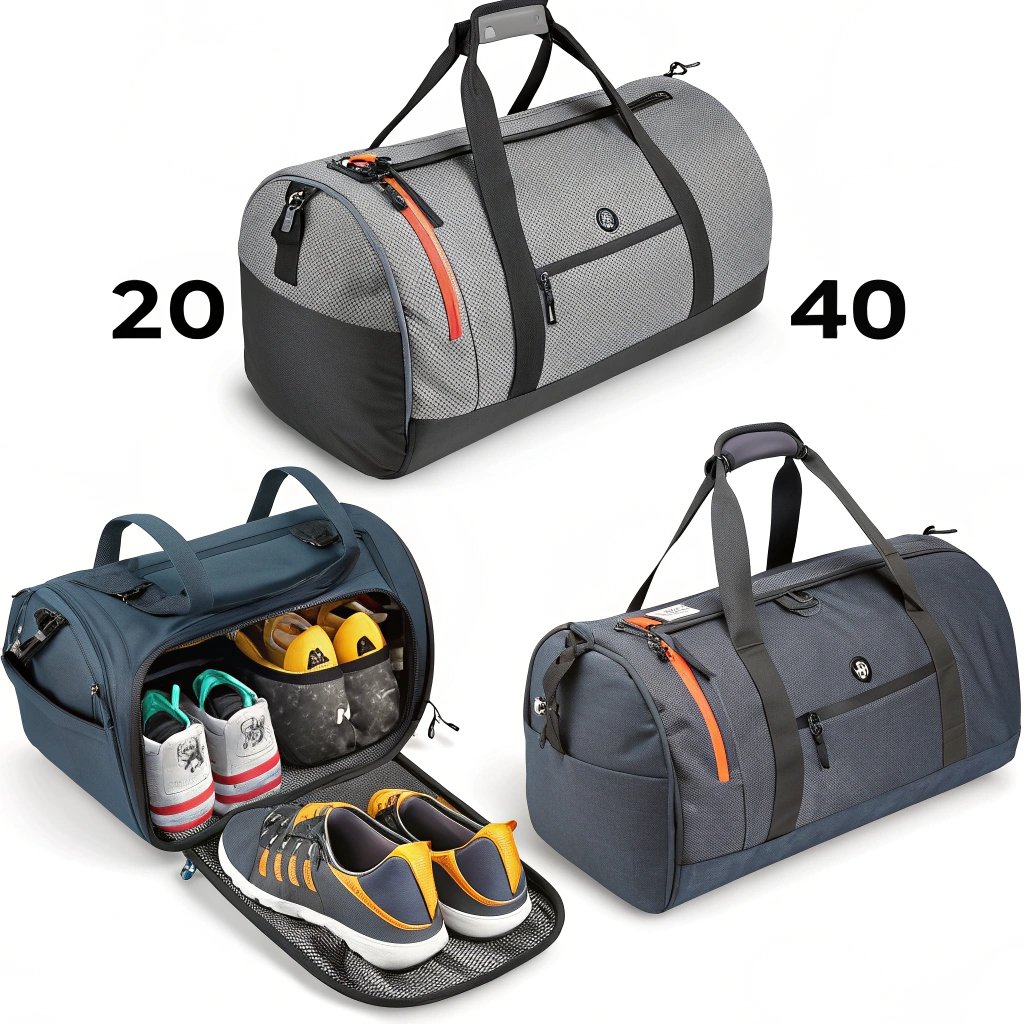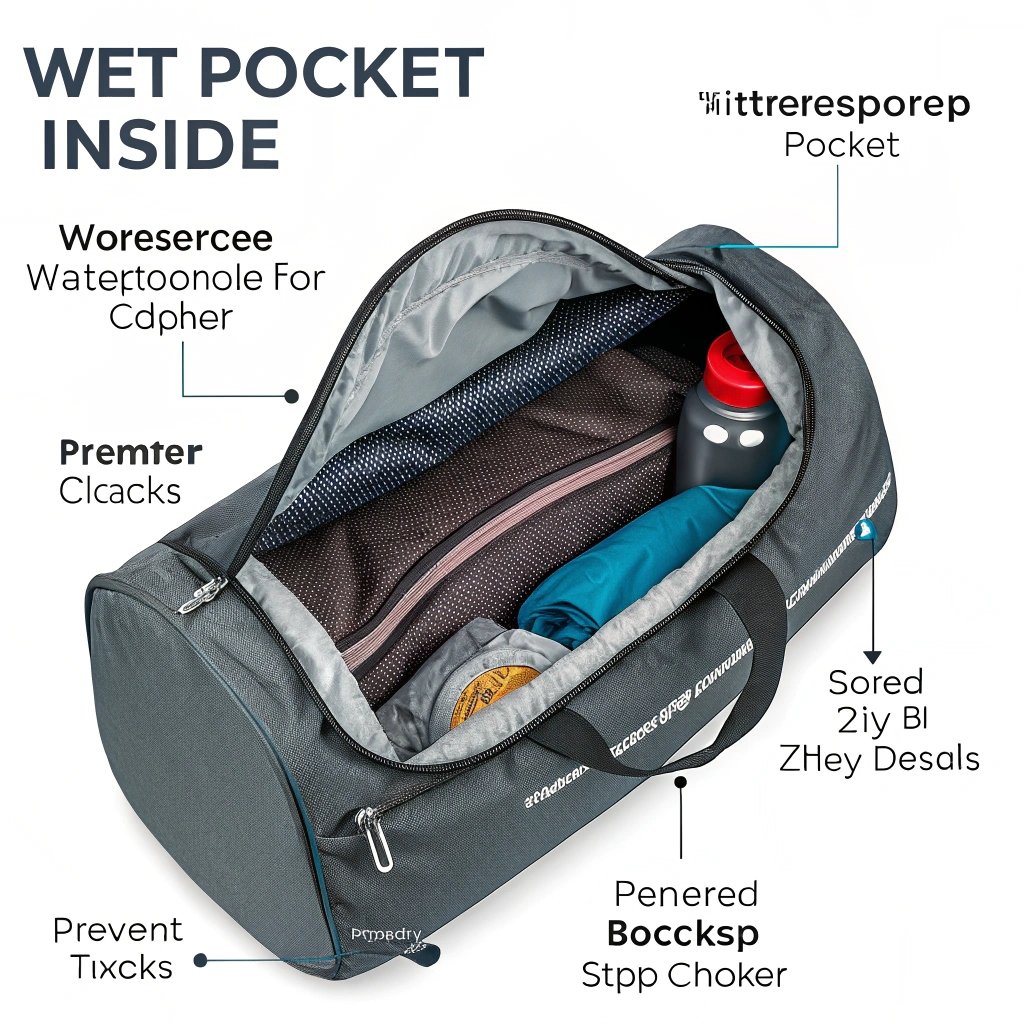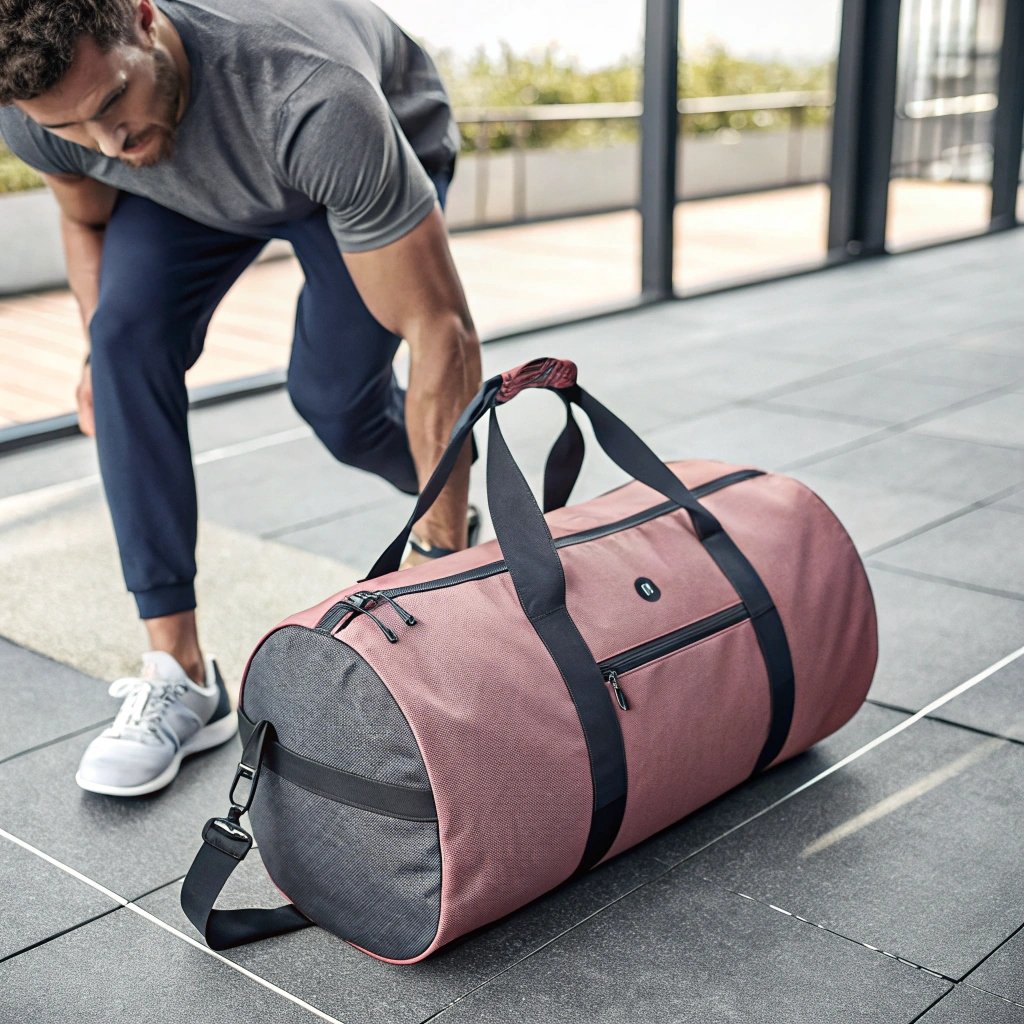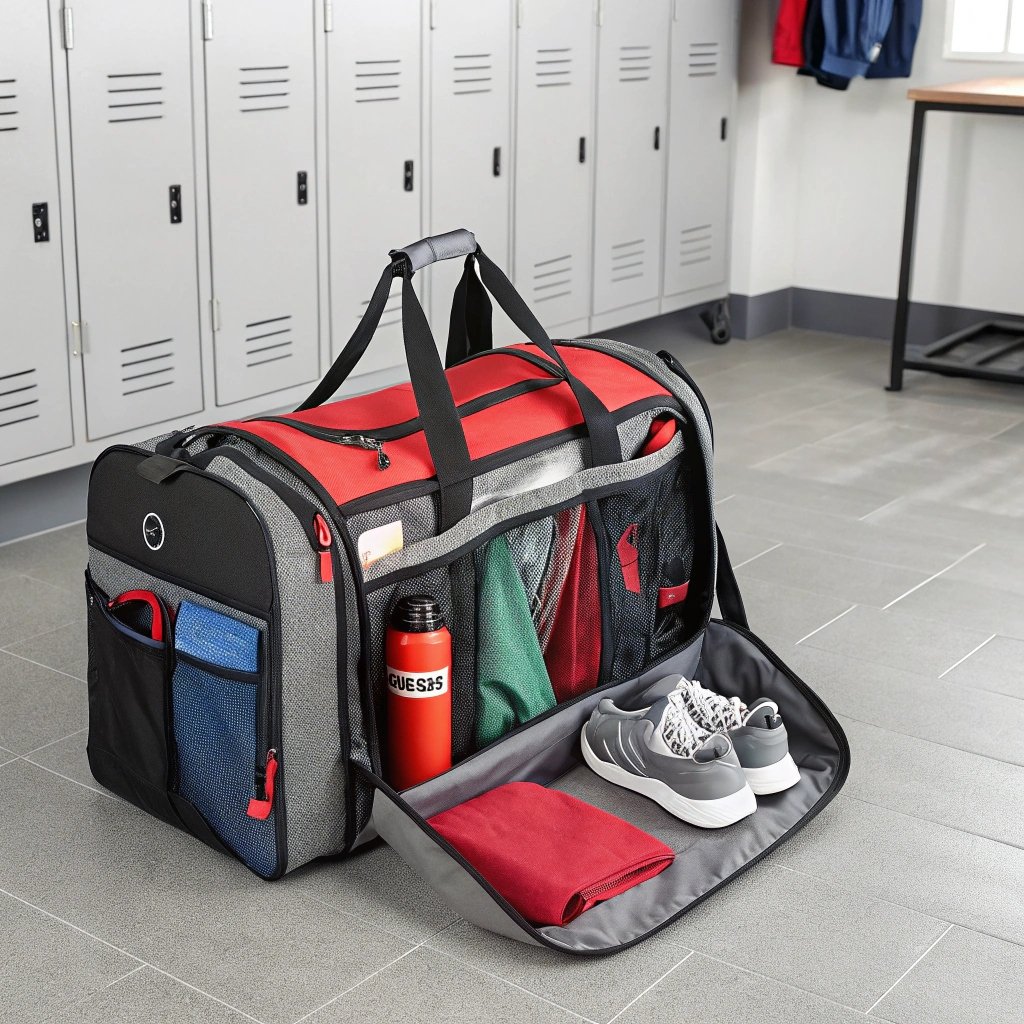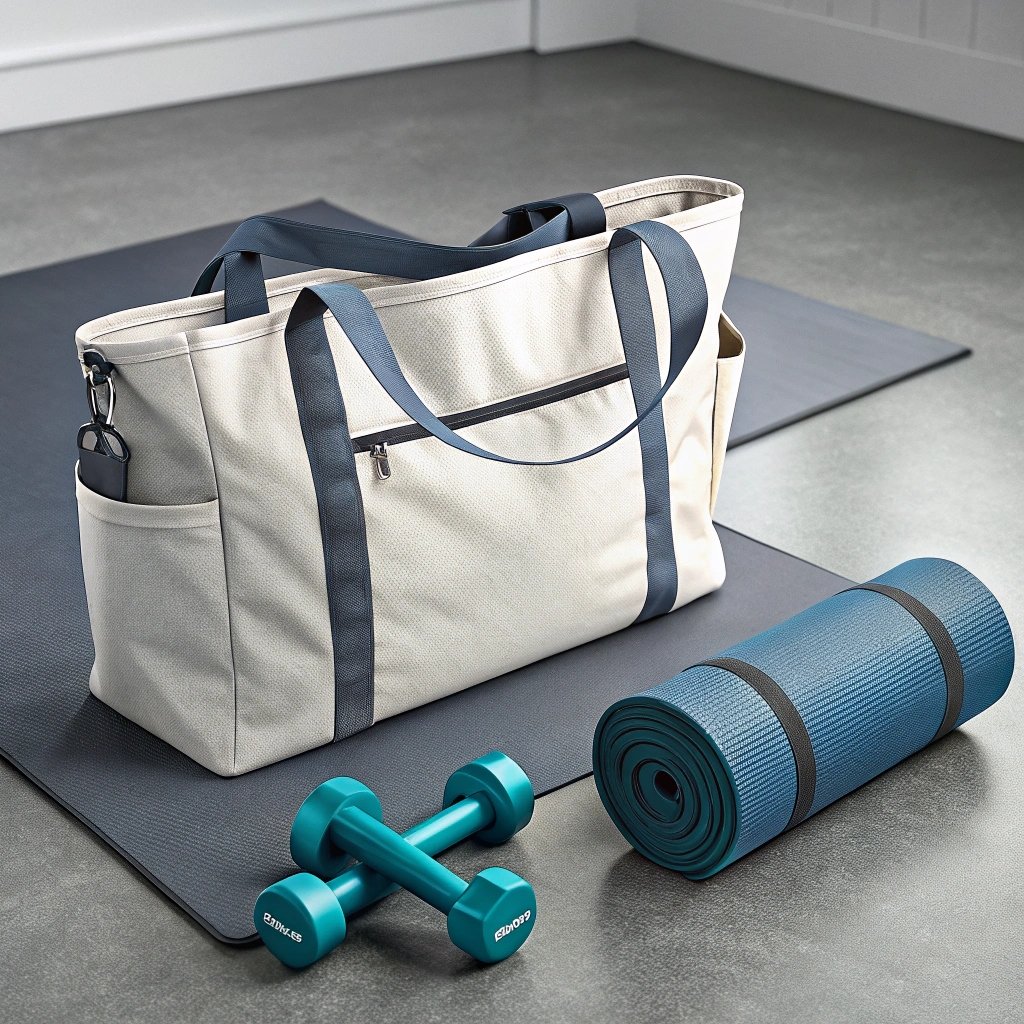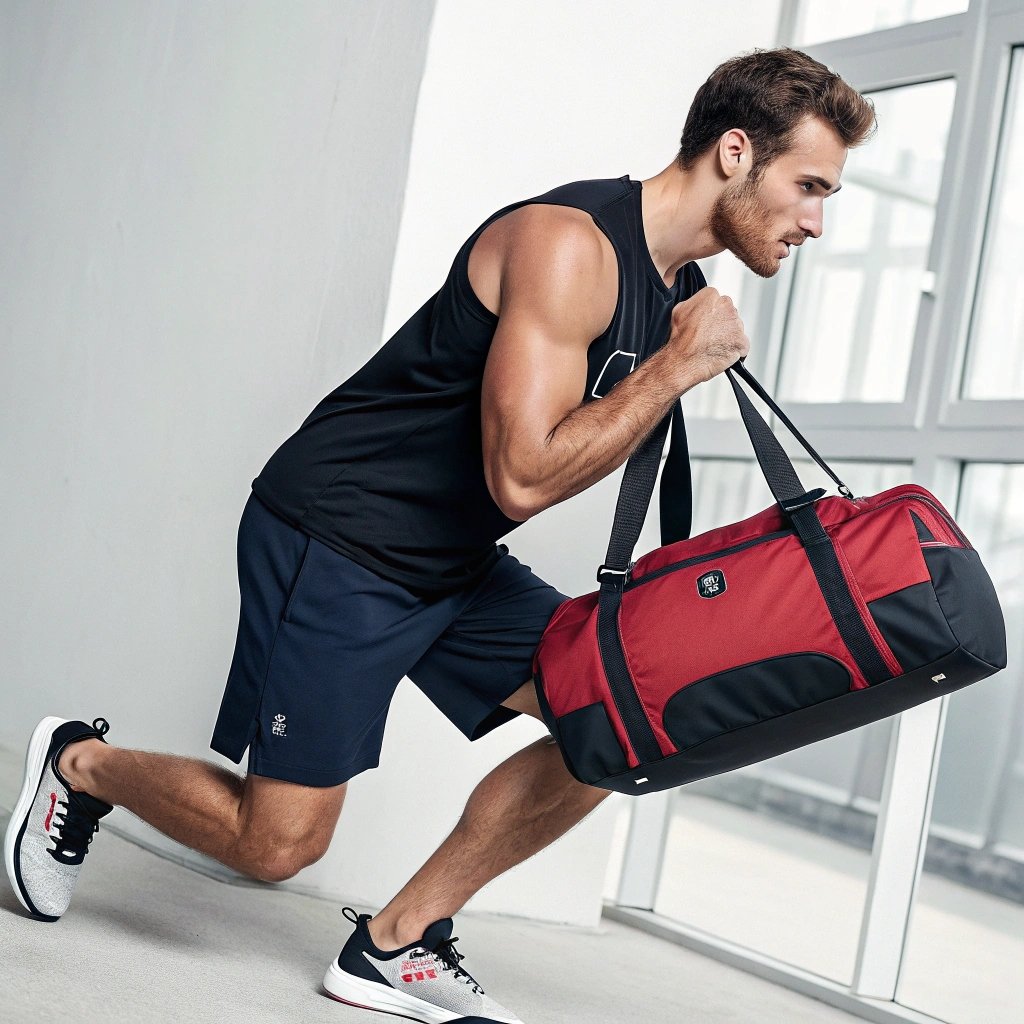Frustrated with juggling gear? A dedicated fitness bag keeps everything organized, clean, and ready for every workout.
A fitness bag is essential for carrying workout gear, separating clean and dirty items, and keeping essentials organized1 before and after training.
Want a gym experience that’s hassle-free? Let’s explore why the right fitness bag makes all the difference.
Which type of bag is best for the gym?
Not sure what bag suits your workout? The best gym bag depends on your training style, space needs, and personal preferences.
The best gym bags are duffle bags with multiple compartments, water-resistant materials, and durable zippers for daily use2.
When I first started going to the gym, I used a simple backpack. But sweaty clothes mixed with clean ones—bad idea. Upgrading to a duffle with a shoe compartment changed everything. I kept my gear organized and fresh.
Why does compartment design matter?
It keeps dirty shoes, wet clothes, and clean gear separate—avoiding odor and mess.
| Bag Feature | Why It’s Useful |
|---|---|
| Shoe compartment | Keeps shoes away from clothes |
| Wet pocket | Stores sweaty or wet gear |
| Water bottle holder | Easy hydration access |
What are workout bags called?
Ever wonder if gym bags have a special name? They’re often known by several interchangeable terms.
Workout bags are commonly called gym bags, duffle bags, or sports bags3, depending on their design and purpose.
I’ve noticed that in retail, “gym bag” appeals to casual fitness users, while “duffle” suggests more versatility. Both work—but branding shifts perception.
What’s the difference?
Duffle bags are generally cylindrical with soft sides; gym bags might be any style suited for carrying fitness gear.
Why do people carry gym bags?
Carrying a gym bag isn’t just about convenience—it’s about hygiene, organization, and preparedness.
People carry gym bags to transport workout clothes, shoes, toiletries, and other essentials needed before, during, and after training4.
Whenever I forget my bag, I end up missing something—whether it’s a towel or headphones. A gym bag keeps me prepared so I don’t skip workouts or feel uncomfortable.
What’s typically inside?
| Item | Purpose |
|---|---|
| Workout clothes | Changing post-work |
| Shoes | Protects other items |
| Water bottle | Hydration |
| Towel | Hygiene |
How big is a gym bag?
Worried about space? Gym bags come in various sizes depending on activity and gear.
Gym bags typically range from 20 to 40 liters in capacity5, enough to fit clothing, shoes, and basic workout essentials.
I use a 35L bag for my daily gym visits—it fits my shoes, change of clothes, and toiletries comfortably without being bulky.
How to choose the right size?
Think about what you carry. Minimalists may prefer compact 20L bags; athletes might need larger bags for extra gear.
What defines “best”?
Durability, comfort, functional compartments, and style tailored to the user’s needs.
What is a wet pocket in a gym bag?
Seen “wet pocket” listed in product specs? It’s a smart feature for active users.
A wet pocket in a gym bag is a waterproof, sealed compartment designed to store damp clothes or towels separately from dry items6.
When I upgraded my bag to one with a wet pocket, it solved the issue of sweaty gear soaking everything else. It’s a small feature with big impact.
Why do you need it?
To avoid bacteria buildup, odor, and cross-contamination with clean items.
What is the difference between a duffle bag and a gym bag?
Confused by the terms? They overlap, but have subtle differences.
A duffle bag refers to a cylindrical, soft-sided bag often used for travel or sports, while a gym bag refers specifically to bags designed for workout gear7.
In practice, most gym bags are duffle-shaped, but some are backpacks or totes tailored for fitness users.
When to choose each?
Use “duffle” for multipurpose travel + gym; “gym bag” for dedicated fitness-focused features.
Why do you need a gym bag?
Think a plastic shopping bag works? Not really—fitness needs go beyond just carrying clothes.
A gym bag provides organization, hygiene, and convenience for transporting workout essentials to and from the gym8.
Without a gym bag, I ended up forgetting socks or misplacing small items. Having a dedicated bag makes fitness part of your routine, not a hassle.
Is it really necessary?
For regular gym-goers, yes. For occasional users, it depends on how much gear you carry.
Can you use a tote bag as a gym bag?
Trying to keep it simple? A tote bag can work—but has limits.
A tote bag can be used as a gym bag for light workouts, but lacks compartments and protective features for regular fitness use9.
I once used a tote for a quick yoga session—it worked fine for a mat and water bottle. But after a sweaty spin class? Not ideal.
When is a tote enough?
Low-impact workouts, short sessions, or minimal gear days.
What are gym bags called?
Wondering about synonyms? Gym bags go by multiple names in retail and casual use.
Gym bags are also called workout bags, sports bags, duffle bags, or training bags10, depending on style and purpose.
For branding, using “gym bag” targets fitness audiences directly, while “duffle” broadens appeal to travelers or athletes.
Conclusion
Fitness bags combine function, style, and organization, making them an essential tool for every workout journey.
-
Learn why fitness bags keep workout essentials organized and clean. ↩
-
Discover what features make a gym bag the best choice. ↩
-
Understand the different names for workout bags in retail. ↩
-
See why people carry gym bags to the gym. ↩
-
Explore gym bag size options for daily use. ↩
-
Learn what a wet pocket is and its benefits. ↩
-
Compare duffle bags vs. gym bags. ↩
-
Understand why a dedicated gym bag is necessary. ↩
-
Know when a tote bag is enough for gym use. ↩
-
Learn alternative names for gym bags. ↩


